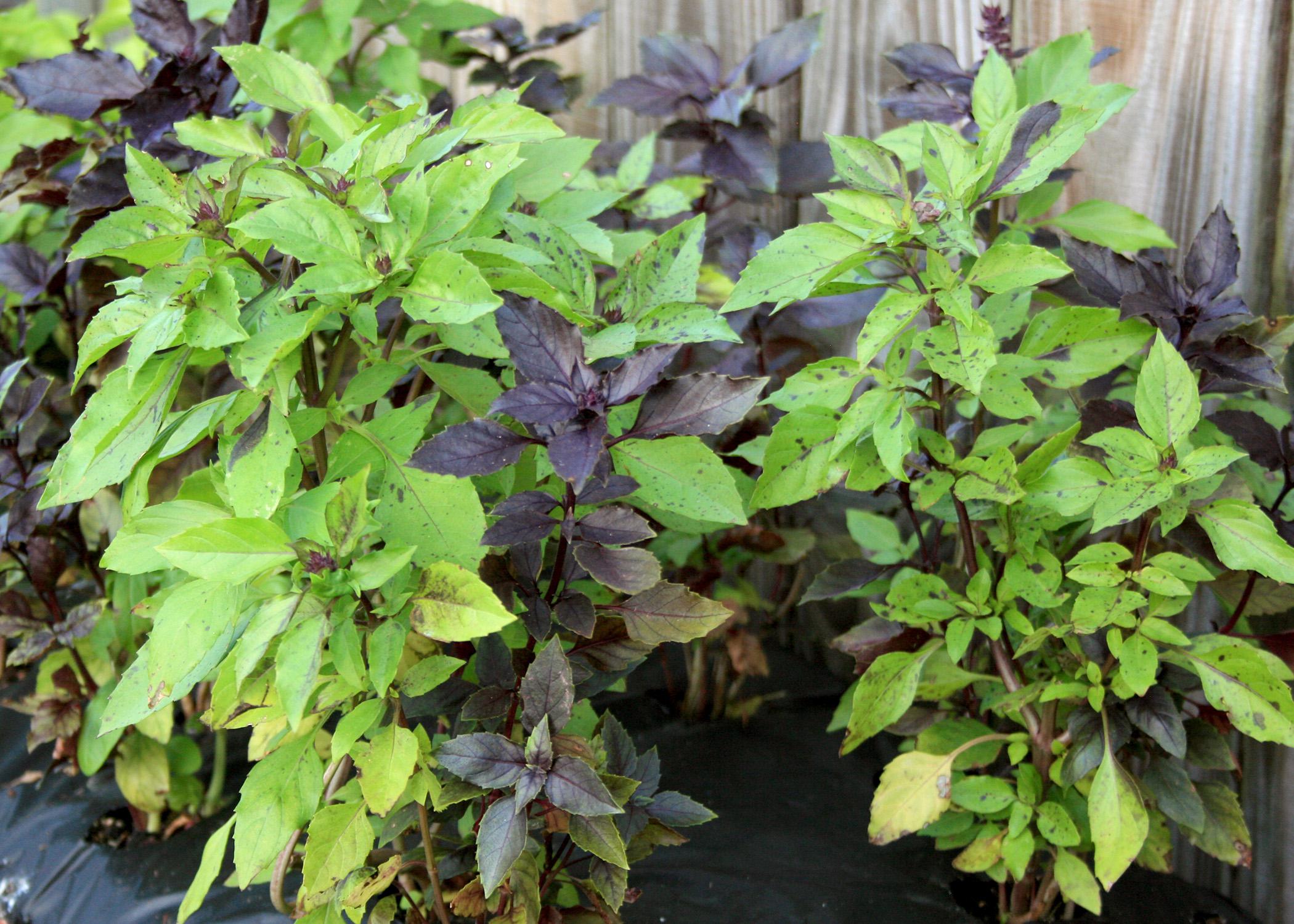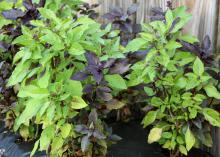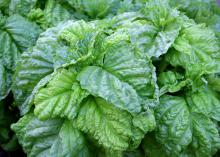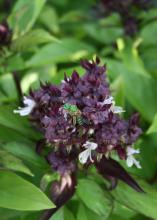Information Possibly Outdated
The information presented on this page was originally released on June 3, 2013. It may not be outdated, but please search our site for more current information. If you plan to quote or reference this information in a publication, please check with the Extension specialist or author before proceeding.
Grow basils for beauty and taste
If there is one herb my wife and I love to grow more than the rest, it has to be basil. There is nothing better for the hot months because it is gorgeous in the landscape and delicious in fresh summer meals.
Many of the gardeners I have talked to think we have taken basil growing to the extreme.
A couple of years ago after seeing row upon row of basil varieties grown at the South Mississippi Branch Experiment Station in Poplarville, we actually grew 30 different basils in our home garden. You can’t imagine all the different aromas; cinnamon, licorice, lemon and lime scents were released when we touched the plants.
For the beginning gardener, common or sweet Italian basil is most likely the basil of choice. It’s versatile in the kitchen and nonthreatening for the novice. But after getting some experience with the plant, the adventurous gardener can take advantage of the wide range of leaf sizes, textures, and believe it or not, flowers.
When we get into the summer months, I start to miss having fresh, garden lettuce for hamburgers and sandwiches, but we found a nice and delicious alternative. One of my absolute favorite basils is the lettuce-leaf variety, which has ruffled leaves that are as big as my hand. A single leaf adds a new twist to the standard sandwich.
Compared to other garden herbs, basil is a tough customer. As a testament to this fact, Purple Ruffles was named a Mississippi Medallion winner. Its deep-purple leaves are very fragrant, and it can be used as a fresh garnish, added as baby greens for color in salads or processed into red basil pesto.
Dark Opal is a beautiful selection that has a variable mottled appearance; no two plants are the same.
One of my favorite purple varieties is Amethyst. The bright, purple leaves resemble the broad, flat leaves of common basil and have the same taste. It is a great ingredient for basil mojitos, turning the drinks a pretty amethyst color.
Thai basil varieties like Queenette and Cardinal have beautiful bright-green foliage that contrasts with their dark-purple stems. These Thai varieties have delicious and exotic cinnamon and licorice flavors and aromas.
A tip for growing basil for kitchen use is to deadhead faded flowers. Basil flowers are easy to spot because they form elongated stems. This practice helps keep the plants producing tasty leaves instead of using the energy for seed production.
However, Siam Queen basil has beautiful flowers that begin as tight purple bunches. They make good cut flowers when collected just as the white flowers begin to emerge. The flowers will open in the vase and stay fresh for at least a week.
Basil thrives when grown in raised beds planted in well-drained soil, but the roots need consistent moisture. Water deeply each week and use a good-quality mulch to help conserve soil moisture and keep the soil cooler.
Growing in containers is a superb option when you have limited space. Place containers on the porch or patio to keep them near your outdoor living areas and handy for summer recipes. Patio is a perfect basil selection to grow in containers on small porches or patios. Compared to the standard sweet Italian, the leaves of Patio are tiny.
To save your summer basil harvest for use in the winter months, combine your extra basil with olive oil in a food processor. Place about ½ cup of the mixture in a freezer bag, press out flat and store in the freezer. This doesn’t take up much room and is an easy to make any recipe extra special later in the year.










